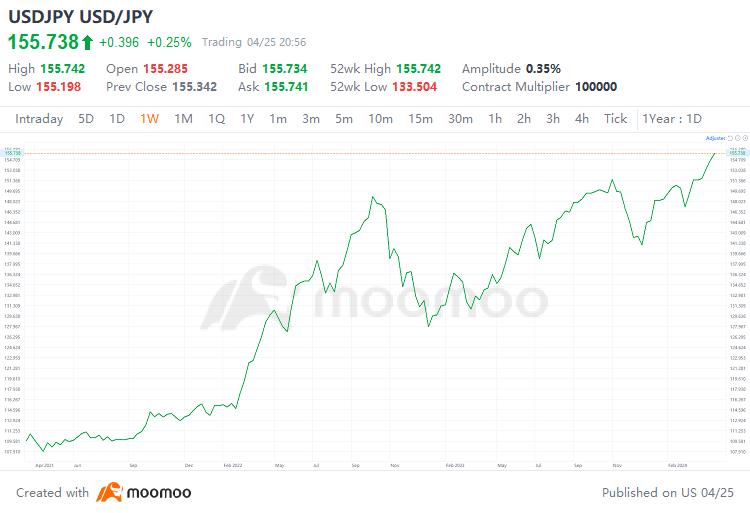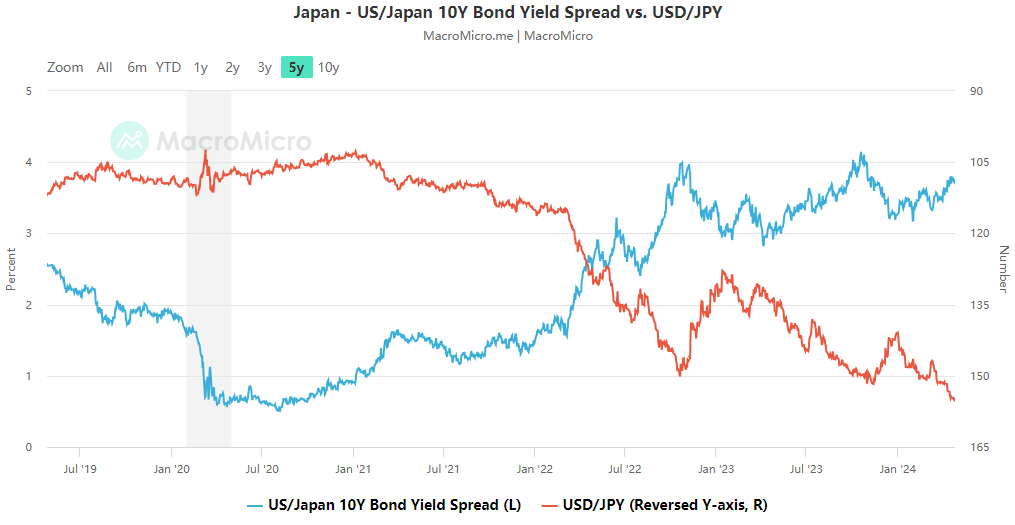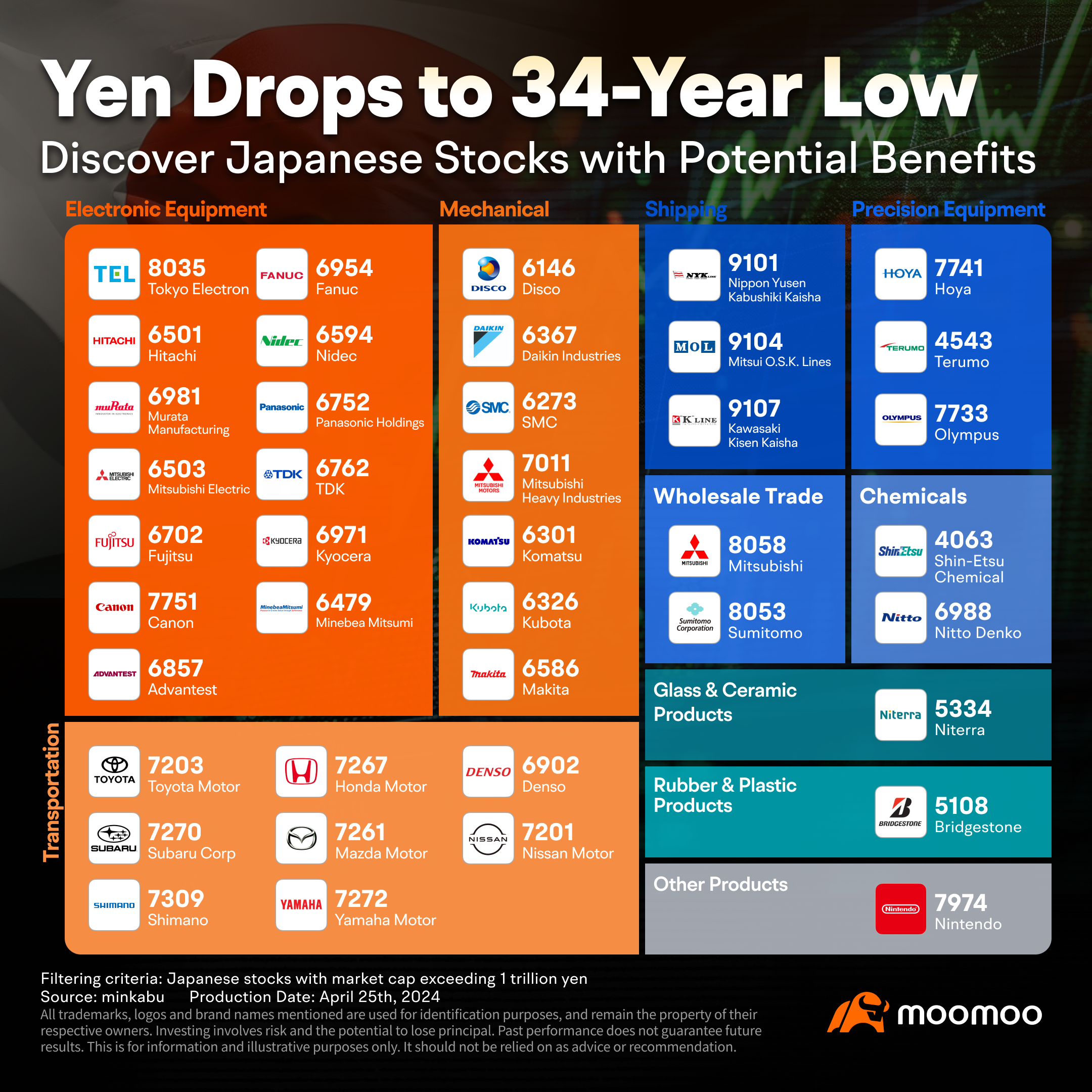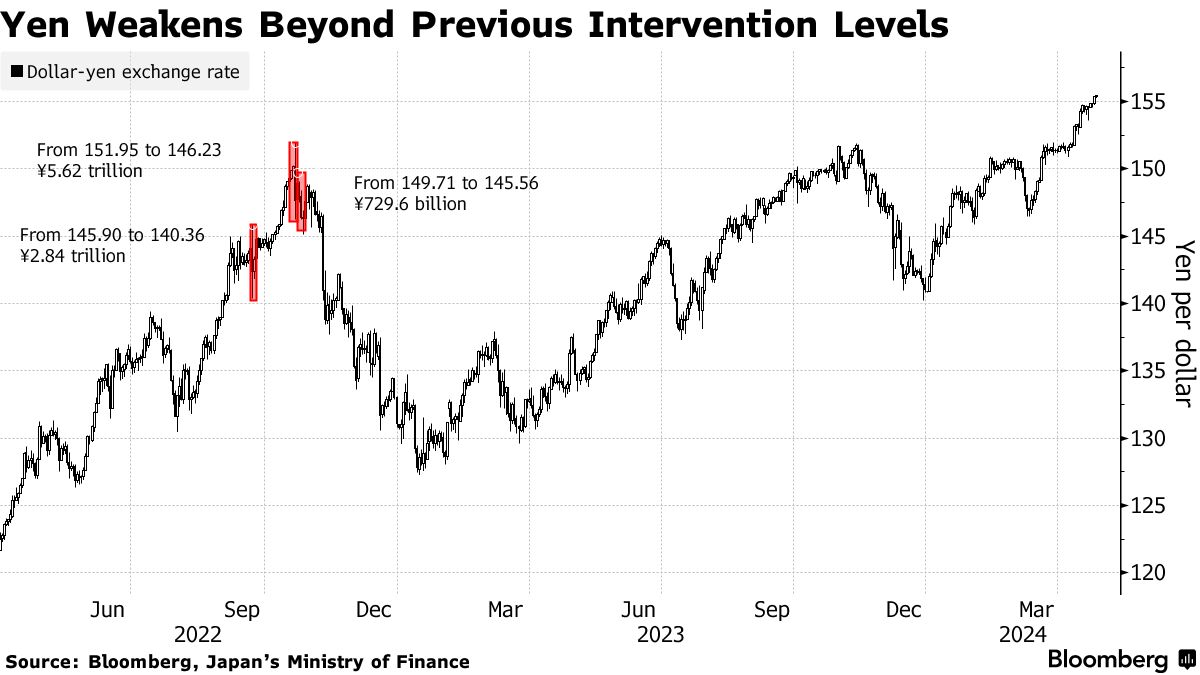Japanese Yen Hits 34-Year Low: What Are the Potential Winners and What's Next?
Betting on the yen's strengthening became a favored strategy over the past year as the Bank of Japan(BOJ) was set to wrap up an eight-year period of negative interest rates in the face of rising inflation. Yet, rather than appreciating, the yen continued to weaken subsequent to theend of negative interest rates.
On April 24th, the Japanese yen continued its slump against the US dollar, breaching the key level of 155 for the first time since June 1990, marking a new 34-year low. So far this year, the yen has plummeted over 9%, rendering it the most depreciated currency among the G-10.

Why Does the Yen Keep Weakening?
1. Rising US-Japan Interest Rate Gap:The persistent devaluation of the Japanese yen can be primarily attributed to the widening interest rate differential between the United States and Japan. At its March meeting, the BOJ decided to conclude its easing policies, including negative interest rates, buoyed by confidence in achieving its inflation targets. Despite the shift away from negative rates, market consensus suggests that the BOJ will maintain a highly cautious stance on tightening monetary policy.
Concurrently, after a series of encouraging economic reports, Federal Reserve Chairman Jerome Powell indicated that the Fed would need more time to assess whether inflation was under control before contemplating rate cuts. Since March, the expanding US-Japan interest gap has further propelled the yen's sustained depreciation.

2. Expansion of Trade Deficit:The widening trade deficit is another key factor behind the yen's continuous depreciation. Since the start of the year, global economic resilience and signs of recovery, alongside geopolitical tensions, have fueled a surge in prices of commodities such as crude oil, copper, and aluminum. After recording trade deficits for three consecutive fiscal years, Japan has seen a further expansion in its trade imbalance. This situation has led to a decreased demand for the yen for trade settlements. Moreover, the allure of higher US interest rates makes the repatriation of the yen increasingly challenging.
3. Diminished Haven Demand:The easing of tensions in the Middle East has recently led to a reduction in safe-haven demand, which provided only a temporary boost to the yen's status as a refuge asset. As concerns abate, the yen's appeal for risk-averse investors has correspondingly weakened.
Which Stocks Stand to Gain from the Yen's Depreciation?
The ongoing devaluation of the Japanese yen is expected to bolster Japan's exports, potentially benefiting major exporting companies, particularly those in the automotive, electrical equipment, precision instruments, and machinery sectors. Here is a curated list of Japanese stocks that are likely to benefit from this trend:

Will the Ministry of Finance Intervene in the Exchange Rate?
The Japanese authorities last intervened in the yen market in 2022, when the Ministry of Finance spent approximately 9.2 trillion yen (around$60.6 billion) in three separate instances to prop up the yen's exchange rate. Prior to the government's intervention in the forex market, the yen had plummeted to a low of 151.95 to the US dollar. The market interventions had an immediate impact, with the USD/JPY exchange rate dropping from 151 to around 127 in the final two months of 2022.
With the yen breaking through the levels that prompted intervention in 2022, the Japanese government has not stood idly by. The authorities have repeatedly stated their readiness to take appropriate measures to counteract any undue fluctuations in the yen's value. Nonetheless, despite verbal cautions from Japan's officials, the yen has been driven down by traders to approach the 155 mark against the dollar—a threshold considered to be Tokyo's red line, which increases the likelihood of market intervention.
Takao Ochi, a high-ranking official in the governing party, indicated that a tumble of the yen towards 160 might incite intervention. He suggested that a further descent of the yen to 160 or even 170 against the dollar "that may be deemed excessive and could prompt policymakers to consider some action".

A segment of market participants remains skeptical about the potential effectiveness of currency intervention by the Japanese government. Despite assurances from government officials that they are ready to step in and address the foreign exchange fluctuations, concerns persist that any intervention might have only a fleeting effect. This skepticism largely stems from the substantial interest rate differential between the United States and Japan, which continues to exert significant influence on the yen's valuation.
This coming Friday, the BOJ is set to announce its Interest Rate Decision following a two-day policy meeting, where discussions on the rapid depreciation of the yen and its impact on inflation will be a central point of interest for markets. In addition, markets are also keenly awaiting the release of the US PCE data for March. If the PCE figures exceed expectations, this could indicate sustained inflationary pressures in the US economy, potentially leading the Fed to delay any plans for a first rate cut. Such a development could strengthen the US dollar further, potentially exerting additional downward pressure on the yen.
Source: WSJ, Bloomberg, Macromicro
By Moomoo News Marina
Disclaimer: Moomoo Technologies Inc. is providing this content for information and educational use only.
Read more
Comment
Sign in to post a comment
